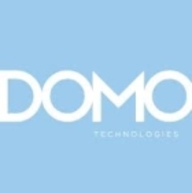

Domo and IBM InfoSphere DataStage are competitors in the data integration and ETL market. Domo appears to hold an advantage in user-friendliness and ease of use for report creation, while IBM InfoSphere DataStage is valued for its strength in enterprise-level data management and integration tasks.
Features: Domo provides a user-friendly experience for non-technical users, strong data integration, and efficient report and dashboard creation. It also offers powerful visualization and extensive connectivity options. IBM InfoSphere DataStage is known for robust data integration, parallel processing power, and strong ETL functionalities, preferred for enterprise-level data management.
Room for Improvement: Domo could benefit from enhanced visualization options, more flexible data management, and improved user guidance. Some users face challenges in handling large data volumes and seek more intuitive data cleanup processes. IBM InfoSphere DataStage is critiqued for its complexity in setup and integration with modern data sources and cloud environments. Users often request improved documentation and better support for new database types, with cost and interface simplicity also noted as areas needing improvement.
Ease of Deployment and Customer Service: Domo is cloud-based, noted for ease of access and rapid deployment, though technical support reviews vary widely. IBM InfoSphere DataStage is mainly on-premises with a focus on hybrid solutions, with concerns about deployment complexity but reliable technical support, particularly for large-scale projects.
Pricing and ROI: Domo, considered expensive, offers a flexible pricing model and users report a significant ROI through enhanced efficiency. Its pricing is seen as high compared to competitors. IBM InfoSphere DataStage is also recognized for its high cost, typically based on usage volume, but its extensive data integration capabilities are valued in complex environments.
While they eventually provide the correct answers, their support for smaller customers could be improved.
We also have the flexibility to submit a feature request to be included as part of the wishlist, potentially becoming a product feature in subsequent releases.
IBM tech support has allocated dedicated resources, making it satisfactory.
Sigma, which is written for Snowflake, scales more easily than Domo.
End users require a license to run their own reports and dashboards, which are fairly expensive.
I wonder if it supports other areas, such as cloud environments with open source support, or EdgeShift.
The solution needs improvement in connectivity with big data technologies such as Spark.
Domo is expensive compared to other solutions.
Pricing for IBM InfoSphere DataStage is moderate and not much expensive.
I have been using it for four years and have been able to extract the information I need from it.
The failure detection has been very useful for us, as well as the load balancing feature.
As we are a financial organization, security is our main concern, so we prefer enterprise tools.


Domo is a cloud-based, mobile-first BI platform that helps companies drive more value from their data by helping organizations better integrate, interpret and use data to drive timely decision making and action across the business. The Domo platform enhances existing data warehouse and BI tools and allows users to build custom apps, automate data pipelines, and make data science accessible for anyone through automated insights that can be shared with internal or external stakeholders.
Find more information on The Business Cloud Here.
IBM InfoSphere DataStage is a high-quality data integration tool that aims to design, develop, and run jobs that move and transform data for organizations of different sizes. The product works by integrating data across multiple systems through a high-performance parallel framework. It supports extended metadata management, enterprise connectivity, and integration of all types of data.
The solution is the data integration component of IBM InfoSphere Information Server, providing a graphical framework for moving data from source systems to target systems. IBM InfoSphere DataStage can deliver data to data warehouses, data marts, operational data sources, and other enterprise applications. The tool works with various types of patterns - extract, transform and load (ETL), and extract, load, and transform (ELT). The scalability of the platform is achieved by using parallel processing and enterprise connectivity.
The solution has various versions, catering to different types of companies, which include the Server Edition, the Enterprise Edition, and the MVS Edition. Depending on which version a company has bought, different goals can be achieved. They include the following:
IBM InfoSphere DataStage can be deployed in various ways, including:
IBM InfoSphere DataStage Features
The tool has various features through which users can integrate and utilize their data effectively. The components of IBM InfoSphere DataStage include:
IBM InfoSphere DataStage Benefits
This solution offers many benefits for the companies that utilize it for data integration. Some of these benefits include:
Reviews from Real Users
A data/solution architect at a computer software company says the product is robust, easy to use, has a simple error logging mechanism, and works very well for huge volumes of data.
Tirthankar Roy Chowdhury, team leader at Tata Consultancy Services, feels the tool is user-friendly with a lot of functionalities, and doesn't require much coding because of its drag-and-drop features.
We monitor all Data Integration reviews to prevent fraudulent reviews and keep review quality high. We do not post reviews by company employees or direct competitors. We validate each review for authenticity via cross-reference with LinkedIn, and personal follow-up with the reviewer when necessary.